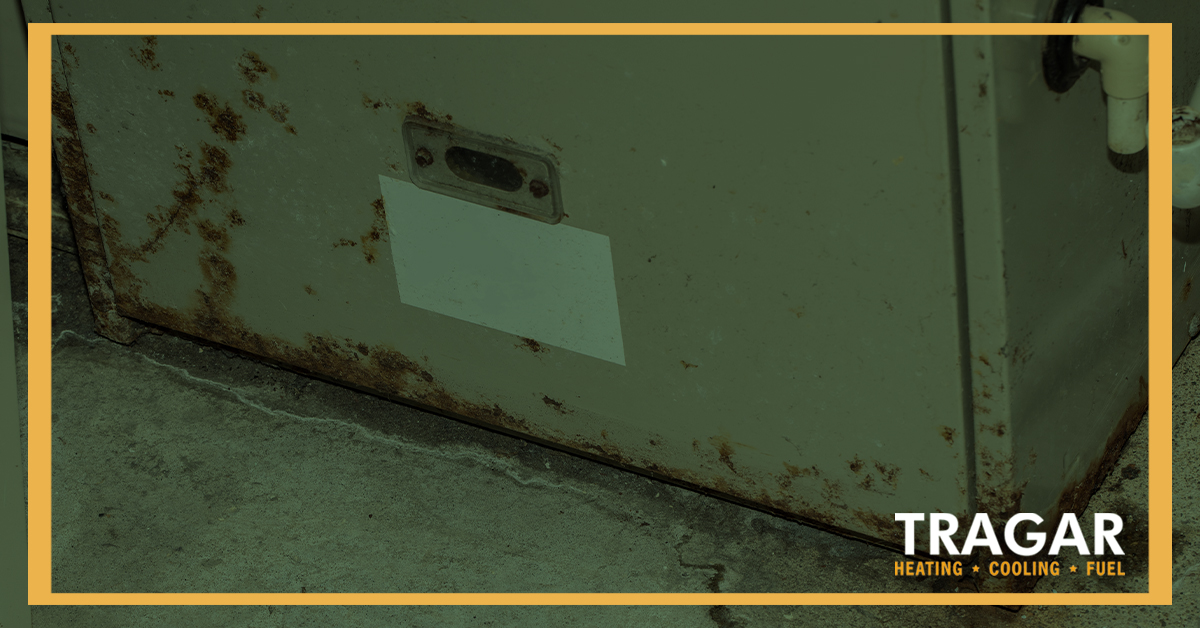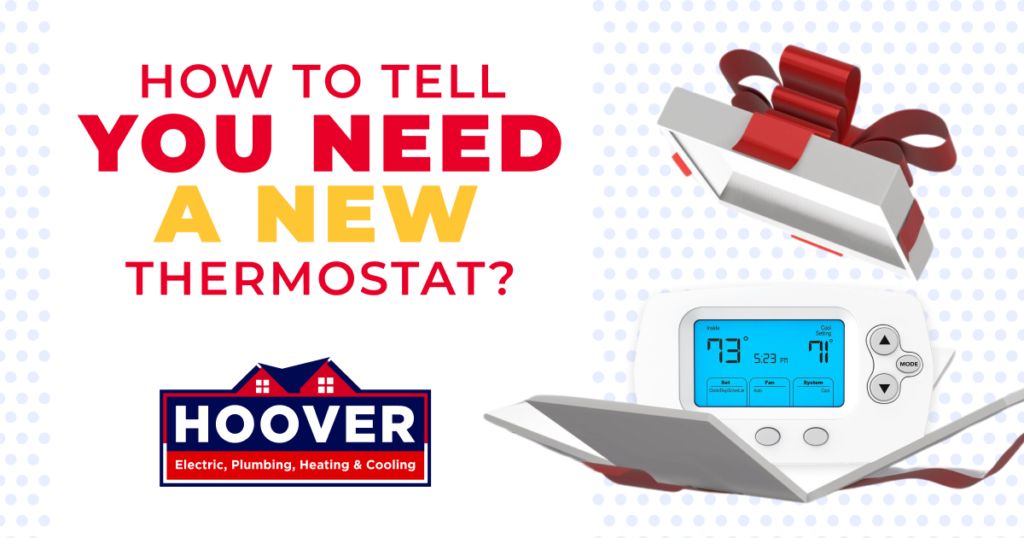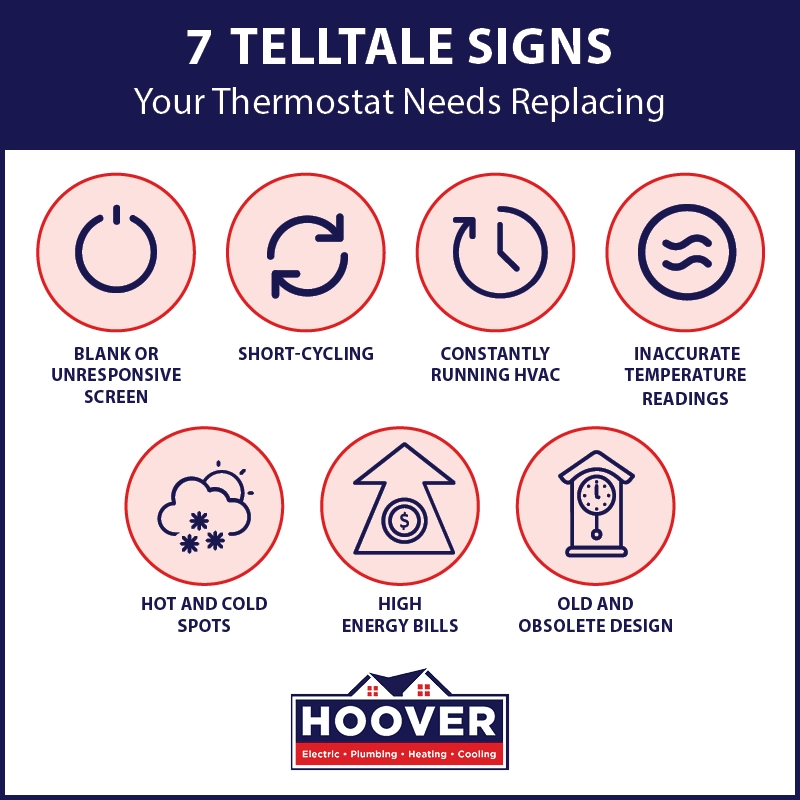Check Best Thermostat Pricing in Amazon
** As an Amazon Associate, I earn from qualifying purchases.
Have you ever found yourself shivering in your living room despite having turned up the heat? Or perhaps you’re sweating while your thermostat insists it’s a comfortable 72 degrees?
These frustrating moments might be signaling that it’s time to take a closer look at your thermostat. An unreliable thermostat can lead to discomfort, wasted energy, and higher utility bills. But how do you know if it’s truly time for a replacement?
We’ll explore the telltale signs that your thermostat might be on its last legs and guide you in making an informed decision. By the end, you’ll have a clear understanding of whether a new thermostat is the key to restoring comfort and efficiency in your home. Stick around, because getting this right can make all the difference for your wallet and your well-being.

Credit: blairsair.com
Signs Of Inconsistent Temperature
Feeling uncomfortable at home is frustrating. A faulty thermostat might be the cause. Recognizing signs of inconsistent temperature can help you decide if it’s time for a replacement.
Frequent Temperature Fluctuations
Notice constant changes in temperature? This could indicate a thermostat issue. The thermostat might not be reading temperatures accurately. If your heating or cooling system keeps starting and stopping, it’s not normal. Check the thermostat settings. It might be a simple fix. But persistent fluctuations could mean the thermostat is failing.
Rooms Too Hot Or Too Cold
Some rooms feel too warm, others too chilly. This inconsistency can be annoying. The thermostat might not be distributing air evenly. If rooms have noticeable temperature differences, it might not be a problem with your HVAC system. A malfunctioning thermostat can lead to uneven heating or cooling. Consider getting the thermostat checked. A professional can determine if it’s time for a new one.
Unresponsive Thermostat
A thermostat should respond quickly to your input. An unresponsive thermostat can be frustrating. It might signal that something is wrong. This can affect your comfort at home. It may also lead to higher energy bills. Knowing the signs of an unresponsive thermostat is important.
Buttons Not Working
Pressing buttons without any change? This could mean a problem. Buttons might get stuck or stop working over time. Dust and debris can also cause issues. Regular cleaning might help, but sometimes replacement is necessary.
Display Issues
Is the display blank or flickering? This can confuse users. A blank screen might mean power issues. Sometimes, it’s a sign of a failing thermostat. Replacing the batteries might help. If not, consider a new thermostat.
Unusual Energy Bills
Have you noticed unusual energy bills lately? These unexpected costs often indicate a problem with your thermostat. A faulty thermostat can result in inefficient heating or cooling. This leads to increased energy consumption. Let’s explore how to identify if your thermostat is the culprit.
Sudden Increase In Costs
A sudden rise in your energy bills can be alarming. If your usage habits haven’t changed, your thermostat might be the issue. It may not be regulating temperatures properly. This forces your HVAC system to work harder. As a result, your energy costs skyrocket unexpectedly.
Energy Usage Spikes
Spikes in energy usage often point to thermostat malfunctions. These spikes occur even when your daily routines remain the same. Your heating or cooling system might turn on more frequently. This inconsistency is usually a sign of a failing thermostat. Monitoring these spikes can help identify the problem early.
Hvac System Short Cycling
Experiencing frequent on and off cycles in your HVAC system? This issue is known as short cycling. It can be a sign that your thermostat might need replacing. Short cycling impacts your home’s comfort and increases energy bills. Understanding the symptoms can help you decide if a new thermostat is necessary.
System Turns On And Off Frequently
Your HVAC system starts up and shuts down often. This cycle happens in short bursts. It strains the system and reduces its lifespan. Short cycling can occur due to a faulty thermostat. The thermostat might misread the temperature. This leads to unnecessary heating or cooling cycles.
Inconsistent Hvac Performance
Does one room feel too warm while another feels cold? This can point to inconsistent HVAC performance. A malfunctioning thermostat might not accurately control the temperature. It may cause uneven heating or cooling throughout your home. Inconsistent performance can lead to discomfort and energy waste.
Thermostat Age
The thermostat is a crucial part of your home’s comfort system. Knowing its age helps determine if it needs replacement. As technology advances, older thermostats may struggle to keep up. They might cause inefficiencies or discomfort.
Outdated Models
Many homes have outdated thermostat models. Older designs lack modern features. They may not support smart home integration. Such models can’t optimize energy use efficiently. These thermostats often have limited programmability. Newer models offer more precise control.
Lifespan Considerations
Most thermostats have a lifespan of about 10 years. After this period, they may malfunction or become unreliable. Regular wear and tear affects their performance. A thermostat’s age impacts its accuracy. Older devices might not read temperature correctly. Efficiency decreases as they age.
Check Best Thermostat Pricing in Amazon
** As an Amazon Associate, I earn from qualifying purchases.

Credit: tragar.com
Connectivity Issues
Connectivity issues with thermostats can be incredibly frustrating. It’s not just about adjusting the temperature anymore; your thermostat is a crucial hub in your smart home ecosystem. When it starts acting up, you might be left wondering if it’s time for an upgrade. Imagine trying to cool down your home during a heatwave, only to find out your thermostat has lost its connection. It’s enough to make anyone rethink their setup. Below, we’ll explore common problems and disruptions to help you determine if a new thermostat is the solution.
Smart Thermostat Connection Problems
Smart thermostats are designed to make life easier, but they can sometimes complicate things. If your thermostat often loses connection with other devices, it might be more than a mere glitch. Consider how often you find yourself manually adjusting the thermostat because it didn’t follow the schedule you set. Frequent disconnections can disrupt your routine and affect your home’s efficiency.
Think about the last time your smart thermostat failed to sync with your phone app or voice assistant. These issues might not seem significant at first, but they can add up over time. If your thermostat struggles to maintain connections, it might be time to explore a more reliable model.
Wi-fi Disruptions
Wi-Fi disruptions are another common issue affecting thermostat performance. Your thermostat relies on a stable Wi-Fi connection to function effectively. If your internet is frequently interrupted, your thermostat won’t perform optimally. Consider the impact of a dropped Wi-Fi connection on a cold winter night when you need to adjust the heating.
Have you ever tried troubleshooting your Wi-Fi only to find out the thermostat was the culprit? It’s worth checking if other devices also experience issues. A thermostat that repeatedly disconnects can point to broader Wi-Fi issues. However, if it’s the only device losing signal, it might be time to consider a replacement.
Connectivity issues can be a strong indicator that your thermostat needs an upgrade. Reflect on your recent experiences and decide if a new thermostat could bring the reliability and efficiency your home deserves.
Lack Of Programmable Features
Many homeowners often overlook the thermostat in their homes. An outdated thermostat can affect your energy bills and comfort. A modern thermostat offers programmable features. These features help in managing energy use more efficiently.
Missing Modern Features
Old thermostats lack modern features. They don’t connect to smart home systems. You miss out on remote access capabilities. You can’t control your home’s temperature from your phone. This limits convenience and flexibility in managing your home’s climate.
Manual Adjustments Required
With outdated thermostats, manual adjustments are frequent. You have to change the temperature settings by hand. This process can be tiresome and inefficient. Modern thermostats allow automatic temperature adjustments. They save time and effort for homeowners.

Credit: www.callhoover.com
Frequently Asked Questions
How Do I Tell When I Need A New Thermostat?
Your thermostat may need replacement if your HVAC system runs inconsistently or if temperature settings fail to change.
How Can You Tell When A Thermostat Is Bad?
A bad thermostat often shows incorrect temperature readings. The system fails to maintain desired room temperature. You may notice frequent on-off cycling or unusual temperature fluctuations. High energy bills can also indicate a faulty thermostat. Replacing or recalibrating the thermostat often solves these issues.
How Do I Test My Thermostat?
To test your thermostat, set it to a temperature above room level. Listen for a click, then check if the heating or cooling system activates. If not, it may need calibration or replacement. Use a thermometer to verify accuracy. Always consult your thermostat’s manual for specific testing instructions.
How Long Will A Thermostat Last?
A thermostat typically lasts 10 to 15 years. Regular maintenance can extend its lifespan. Consider replacing it if it malfunctions or your energy bills increase unexpectedly. Newer models offer advanced features and better energy efficiency.
Conclusion
A faulty thermostat can cause discomfort at home. Recognize signs like uneven temperatures. Frequent adjustments might mean it’s time for a change. High energy bills can also indicate an issue. Consistent maintenance prevents bigger problems later. A new thermostat ensures comfort and efficiency.
Check your device regularly to avoid issues. Replacing it might be the best solution. A small investment for peace of mind. Keeping your home cozy should be easy. Is your thermostat doing its job? If not, consider an upgrade. Simple steps can make a big difference.
Stay warm, stay cool, stay comfortable.
Check Best Thermostat Pricing in Amazon
** As an Amazon Associate, I earn from qualifying purchases.


